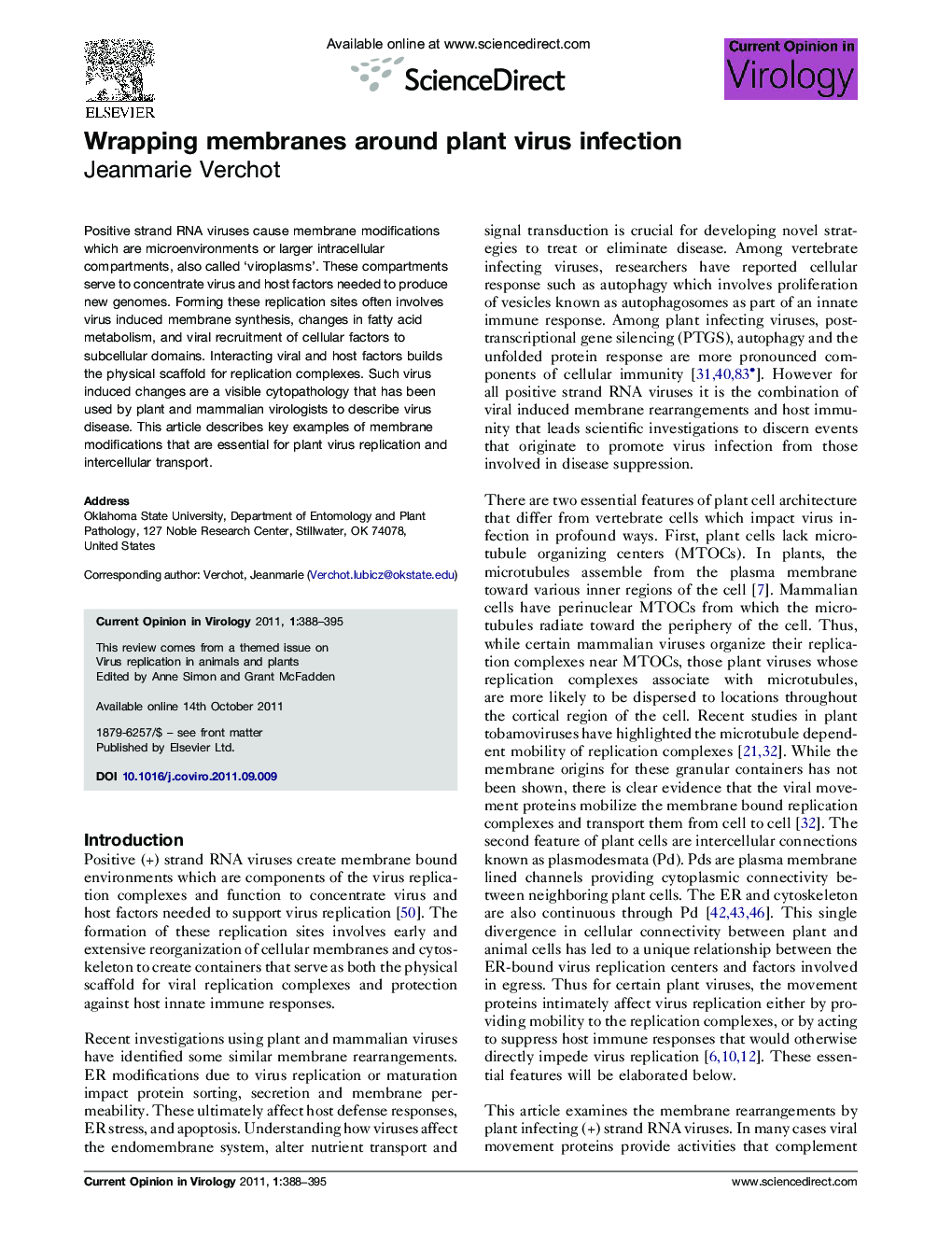| Article ID | Journal | Published Year | Pages | File Type |
|---|---|---|---|---|
| 2473568 | Current Opinion in Virology | 2011 | 8 Pages |
Positive strand RNA viruses cause membrane modifications which are microenvironments or larger intracellular compartments, also called ‘viroplasms’. These compartments serve to concentrate virus and host factors needed to produce new genomes. Forming these replication sites often involves virus induced membrane synthesis, changes in fatty acid metabolism, and viral recruitment of cellular factors to subcellular domains. Interacting viral and host factors builds the physical scaffold for replication complexes. Such virus induced changes are a visible cytopathology that has been used by plant and mammalian virologists to describe virus disease. This article describes key examples of membrane modifications that are essential for plant virus replication and intercellular transport.
► Plant alpha-like viruses typically replicate along invaginations of the ER. ► Plant flavi-like viruses typically replicate along organellar membranes. ► Bromoviruses and Tombusviruses need ESCRT for replication. ► The secretory and endocytic network are often involved in virus egress. ► Plant viral movement proteins regulate host gene silencing and ER stress to increase virus replication.
